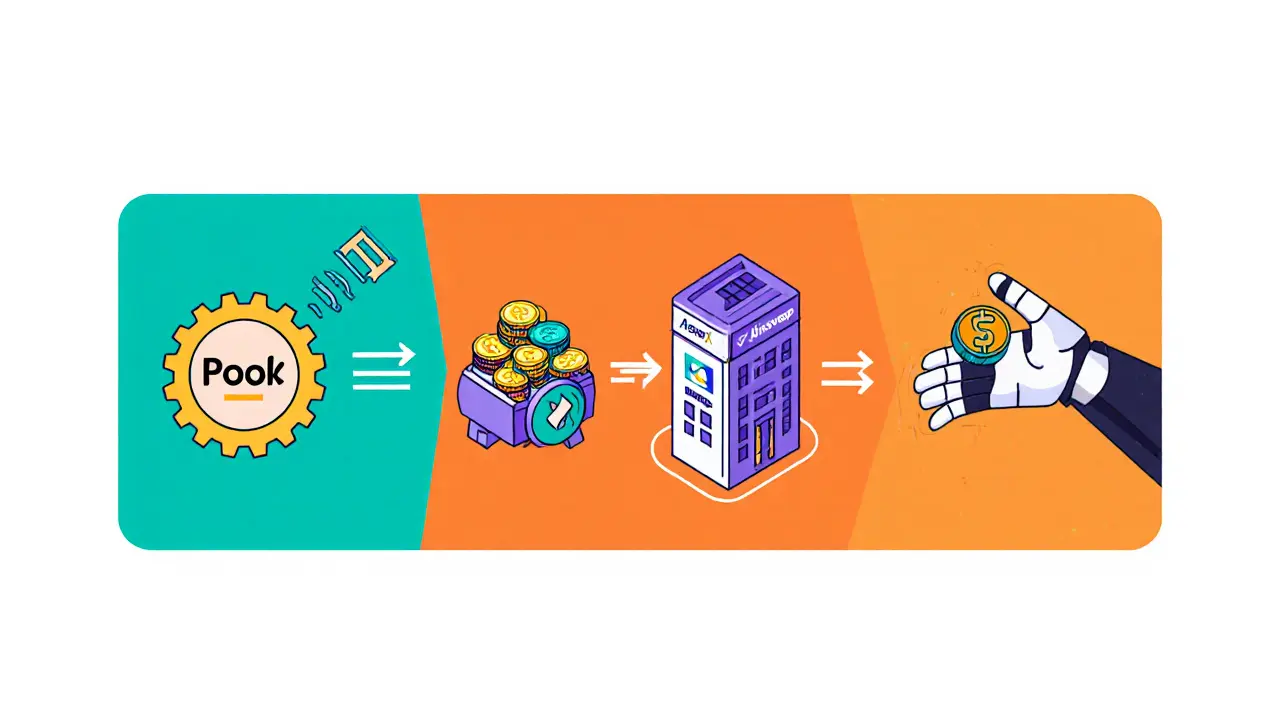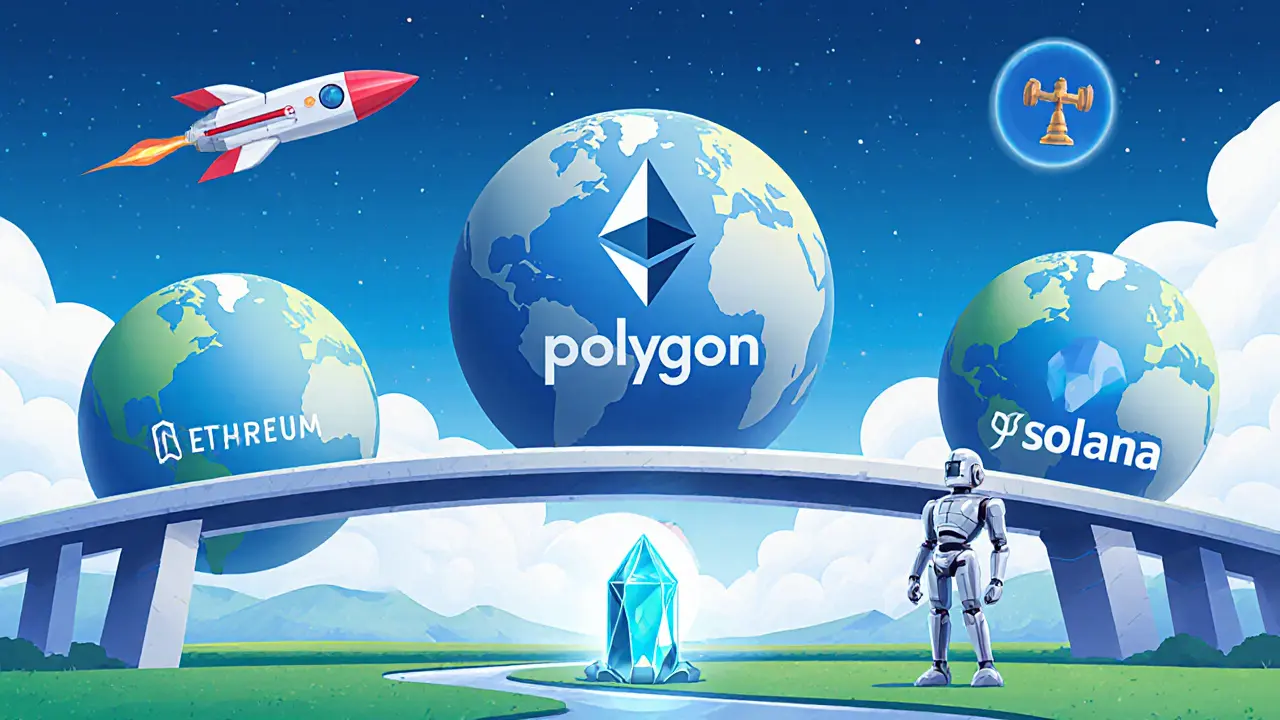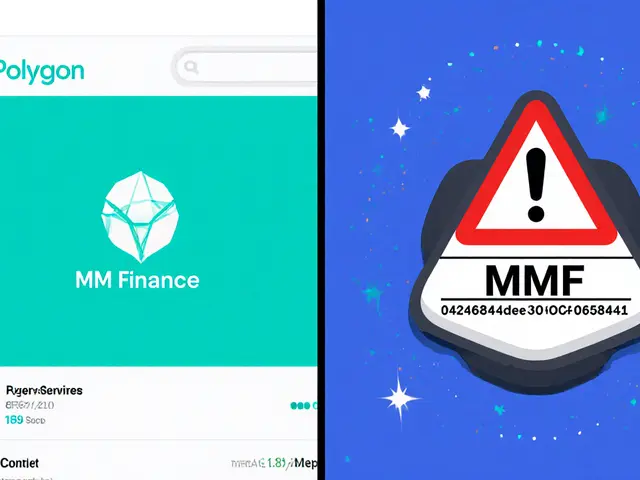MM Finance (Polygon) Review: Scam Token or Legit DEX?
A concise review reveals that MM Finance (Polygon) token (MMF) has zero supply, no liquidity, and is flagged as a scam, while the MM Finance DEX itself works without a native token.
Read More

Ever wondered how you can move millions of dollars across crypto markets in a single transaction without posting any collateral? That’s the magic of a flash loan. In DeFi, flash loans let anyone borrow assets instantly, use them for a specific purpose, and repay them-all within one atomic blockchain transaction. If the repayment fails, the whole operation simply never happened. This guide breaks down the biggest flash loan providers, how the technology works, real‑world use cases, and what you need to watch out for before diving in.
Flash Loan is a collateral‑free borrowing primitive in decentralized finance (DeFi) that must be repaid within the same blockchain transaction. The concept hinges on the idea of atomicity: either every step of the transaction succeeds, or the entire block is reverted as if it never existed. Because the loan is guaranteed to be repaid instantaneously, liquidity providers can safely lend large sums without demanding collateral.
The process can be boiled down to five core steps:
All of this happens on a single block, typically within a few seconds. Because the code runs on Ethereum (or compatible chains), the execution is trustless - no human or central authority can intervene mid‑flight.
A developer building a flash‑loan strategy must code three essential modules:
Because the contract executes everything atomically, any failure in the core logic triggers an automatic rollback, preserving the pool’s capital.
Several platforms dominate the flash‑loan space. Below is a snapshot of each, with a focus on their unique twists.
While Aave remains the market leader in terms of total liquidity, newer entrants like Equalizer and Port are gaining traction by offering lower fees and cross‑chain support.

| Provider | Fee Rate | Supported Chains | Key Assets | Liquidity (USD) |
|---|---|---|---|---|
| Aave | 0.09 % per loan | Ethereum, Polygon, Optimism | ETH, USDC, DAI, WBTC, many ERC‑20s | ≈ $1.2 B |
| dYdX | 0.12 % (lower on L2) | Ethereum L2 (StarkEx) | ETH, USDC, USDT, BTC‑synthetic | ≈ $350 M |
| Uniswap v3 | 0.05 % (pool‑specific) | Ethereum | All pool tokens | ≈ $800 M (across pools) |
| Equalizer Finance | 0.07 % (dynamic) | Ethereum, Arbitrum | ETH, USDC, WETH, custom tokens | ≈ $120 M |
| Port Finance | 0.10 % (flat) | Solana | SOL, USDC‑sol, mSOL, other SPL tokens | ≈ $90 M |
| Furucombo (via partners) | Varies by underlying lender | Multi‑chain (Ethereum, BSC, Polygon) | Depends on chosen lender | Aggregated across partners |
The fee rates look tiny, but remember that profit margins in arbitrage can be razor‑thin, so every basis point matters.
Because the loan must be repaid instantly, only strategies that can close within one transaction are viable.
All of these require real‑time data feeds (often via Chainlink price oracles) and fast execution - delay by even a few seconds can wipe out the profit.
Flash loans are powerful, but they also open a door for attackers.
To mitigate these, always audit your contract, simulate transactions on testnets, and consider using private transaction relayers to hide your intent.

If you’re comfortable with Solidity (or Rust for Solana) and have a funded wallet, follow this roadmap:
FlashLoanReceiverBase contract).executeOperation (or equivalent) and includes your arbitrage logic.Once you’ve proven the flow, scale up the loan size and add more complex steps, perhaps using Furucombo’s visual builder to stitch together multiple DeFi actions without writing extra code.
Several developments are shaping the next wave:
Keeping an eye on these trends will help you stay ahead of the curve and avoid costly mistakes.
Most providers require a custom smart contract, but tools like Furucombo let you build simple strategies with a drag‑and‑drop UI, reducing the need for deep coding.
Fees range from 0.05 % to 0.12 % of the borrowed amount, depending on the provider and the blockchain used.
Not directly. Flash loans rely on smart‑contract platforms; Bitcoin’s script language doesn’t support atomic multi‑step contracts.
It can be risky. Start with tiny loan amounts on testnets, audit your contract, and factor in gas costs before risking real capital.
They expose attack vectors because they let anyone move large capital instantly. Protocols now add reentrancy guards and oracle hardening to limit abuse.
Flash loans are a niche yet powerful tool in the DeFi toolbox. With the right understanding, code, and risk management, they can unlock opportunities that traditional finance simply can’t match.
flash loans?? lmao i just wanna buy eth and chill 😅 why do ppl make this so complicated?? like bruh its just money moving around in circles 🤡
This is how crypto kills itself
I love how DeFi keeps pushing boundaries like this! Even if it seems wild, it’s amazing to see innovation happening in real time. Maybe one day we’ll all be able to use tools like this without needing to code? 🌱
you think this is legit? nahhh they’re all rigged. the big boys use flash loans to manipulate prices then blame the little guys when it crashes. watch the SEC come in next month and shut it all down. they’ve been watching since day one. i’ve seen the patterns. they’re not here to help you
usa and india always first to try new crypto stuff. other countries still stuck in banks. flash loans? just another way for rich guys to get richer. we dont need this
How quaint. I remember when DeFi was about democratizing finance - now it’s just a playground for overleveraged degens with Solidity scripts and zero risk awareness. Honestly, I’m embarrassed for the space. The fee structures alone reveal a fundamental lack of economic literacy. And don’t get me started on Furucombo - it’s like giving a toddler a nuclear launch code and calling it ‘user-friendly’.
I’ve been watching this space for a while and honestly, it’s wild how fast things are evolving. I started with just small testnet experiments and now I’m seeing real potential in cross-chain setups. Keep it simple, stay safe, and don’t rush - progress takes time.
While this guide is technically thorough, it dangerously glosses over the ethical implications of flash loan arbitrage as a systemic vulnerability in decentralized finance. The notion that 'if the repayment fails, the whole operation simply never happened' is a legal and moral fiction - because while the blockchain reverts, the market impact, the MEV extraction, the gas wars, and the cascading instability remain real. You’ve built a beautiful cathedral on a fault line, and now you're handing out blueprints to everyone who wants to dance on the edge. I implore you: before you deploy another contract, ask not whether it works - but whether it should. DeFi doesn’t need more speed. It needs more soul.

A concise review reveals that MM Finance (Polygon) token (MMF) has zero supply, no liquidity, and is flagged as a scam, while the MM Finance DEX itself works without a native token.
Read More
A 2025 guide listing crypto exchanges that still accept Iranian users, covering domestic options, international platforms, fees, security, and recent regulations.
Read More
A detailed İkipara crypto exchange review exposing missing licenses, security gaps, and user red flags, plus a checklist to verify any exchange.
Read More
Comments (8)